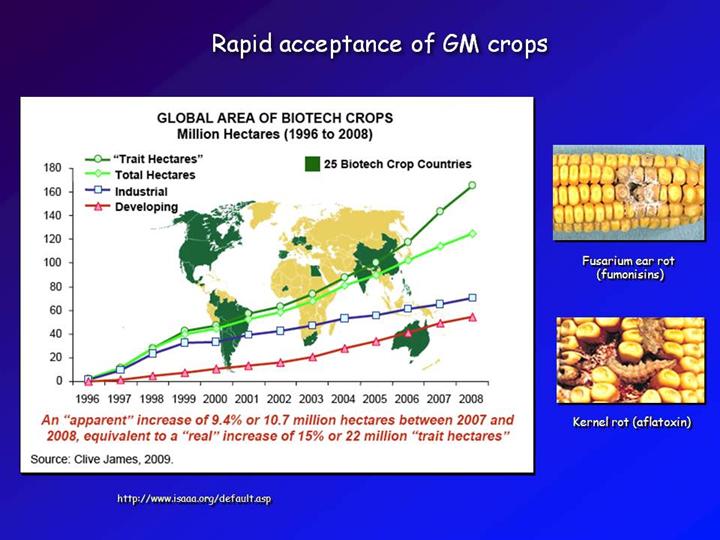 |
GM crop
acreage has increased rapidly world-wide since the introduction of GM crops
in 1996, driven primarily by cotton, corn and soybeans. By 2008, roughly
10% of cropland was planted in GM crops. The adverse effects, such as rapid
development of Bt resistance, have not materialized. So far, the only
unexpected effects have been beneficial. For example, many grains and nuts,
including peanuts, are often contaminated by toxic compounds, called
mycotoxins, made by fungi that follow boring insects into the plants. Two
of these, fumonisins and aflatoxin, are extremely toxic to people and
animals. Bt corn, however, shows as much as a 90% reduction in mycotoxin
levels because the fungi that follow the boring insects into the plants
canít get in. No insect holes, no fungi, no mycotoxin. It has also been
reported that planting Bt crops might well reduce insect pressure in other
crops growing nearby. Bt cotton has been widely planted in Asia. Analysis
of the population dynamics of the target pest, the cotton bollworm, show
that Bt cotton not only controls the target pest, cotton bollworm, on
transgenic cotton designed to resist this pest but also reduces its presence
on other host crops and decreases the need for insecticide sprays in general
(Science 19 September 2008).
http://www.isaaa.org/default.asp |
